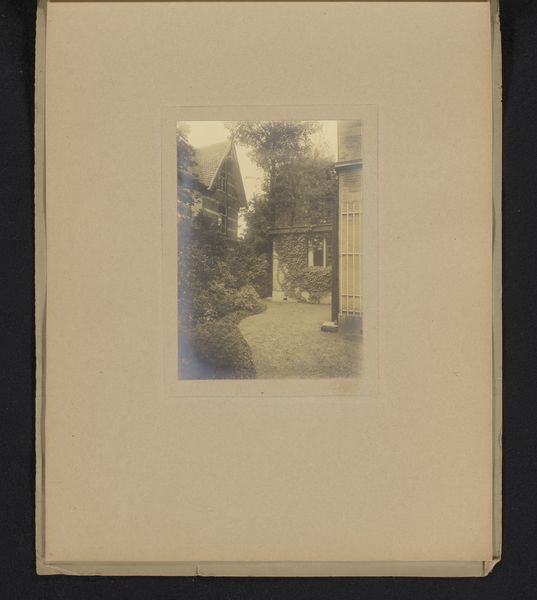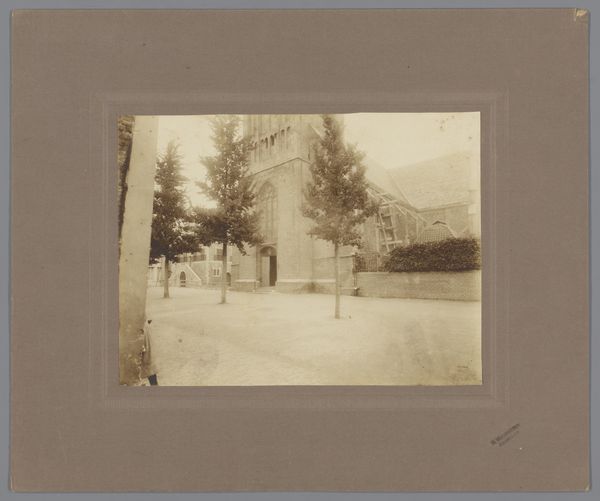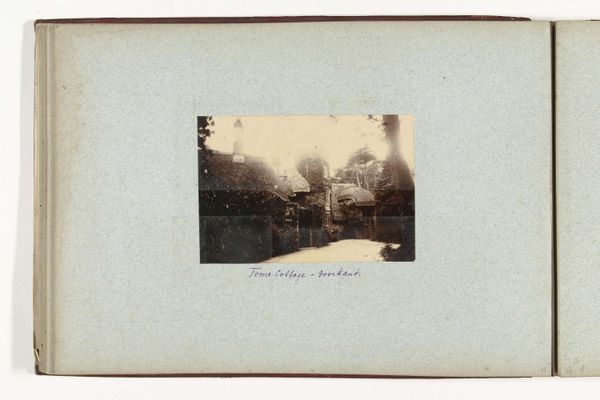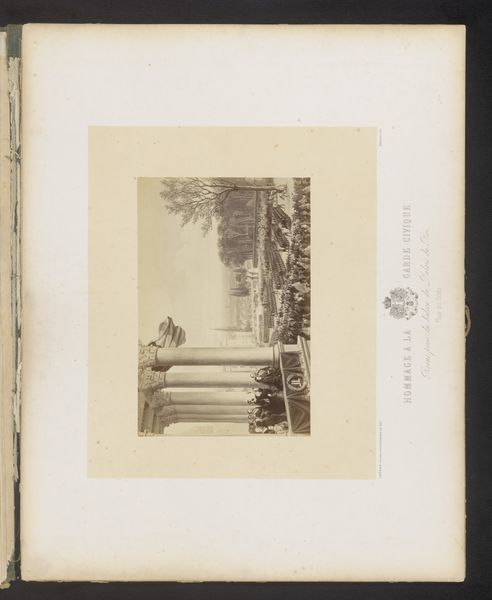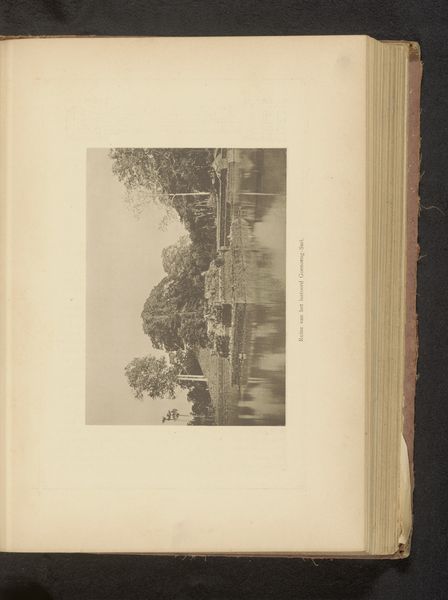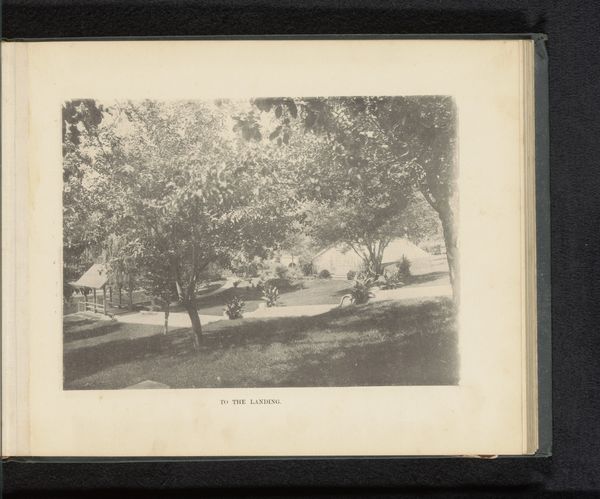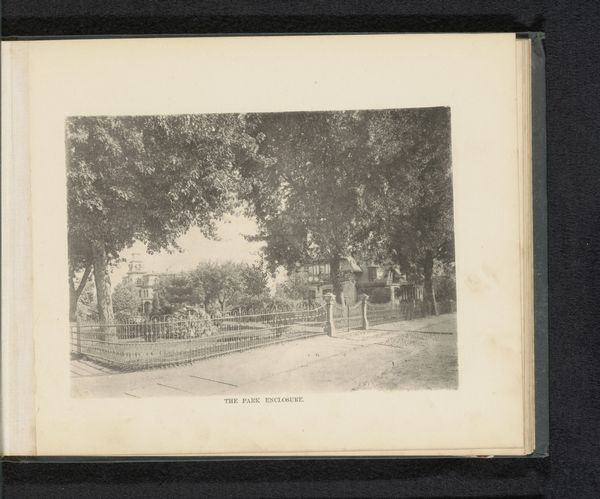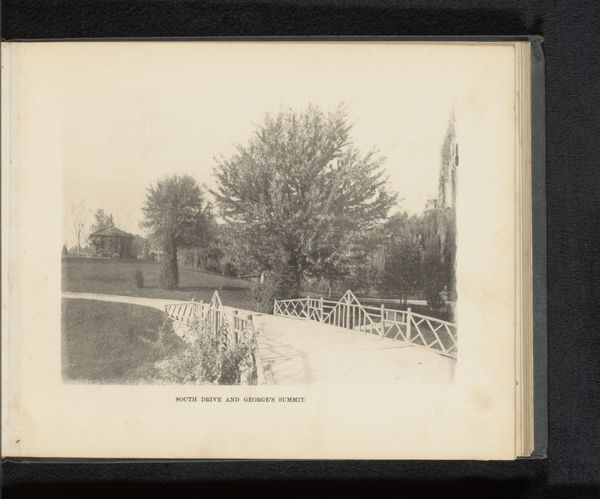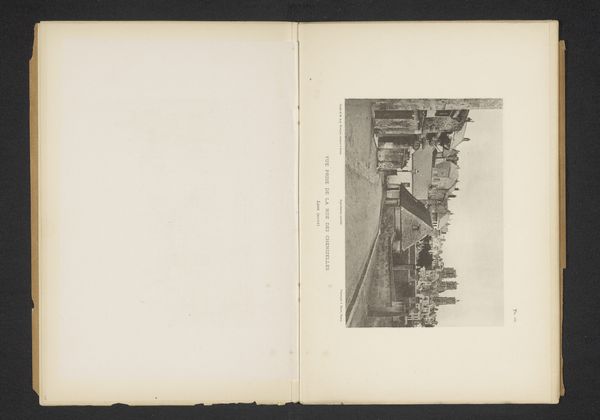
Tuin van het huis van de familie Jonker in Bussum, met rechts Lucas Jonker en Neletta Jonker-van der Linden 1890 - 1915
0:00
0:00
Dimensions: height 112 mm, width 155 mm
Copyright: Rijks Museum: Open Domain
Curator: Here we have a gelatin silver print titled "Tuin van het huis van de familie Jonker in Bussum, met rechts Lucas Jonker en Neletta Jonker-van der Linden," translating to "Garden of the Jonker Family House in Bussum, with Lucas Jonker and Neletta Jonker-van der Linden on the right," attributed to Fotografisch Atelier Brinklaan, and likely created between 1890 and 1915. Editor: Ah, a moment frozen in time! It feels almost ghostly, doesn’t it? That silvery light, those shadowy trees… It’s like peering into someone's memory of a summer afternoon. Curator: Indeed. What strikes me is the staging of domesticity and gender within the confines of bourgeois identity. The house acts almost as a backdrop—a symbol of the family's standing, while the two figures positioned to the side subtly reinforce established social roles and the family structure itself. Editor: I like that interpretation. To me it’s less about staging and more about a feeling—that wistful light hitting the garden makes me want to stroll around that manicured lawn, but there’s a bit of detachment. Almost like a voyeuristic pleasure in imagining being there. It's interesting the absence of real interaction captured, don’t you think? Curator: I do. Though categorized as plein-air photography and reflective of Impressionistic aesthetics in capturing natural light and everyday scenes, it serves a different purpose than its painted counterparts. This photographic approach further entrenches idealized versions of class and domesticity as truth, as reality, obscuring complexities of lived experience under the veneer of naturalism. The supposed objectivity of the camera in fact reinforces social constructs. Editor: That's a compelling argument. And it raises questions about the nature of truth in art. Is there more than just pretty light and green leaves that linger for an echo of generations to come? Is this not what captures attention the most? The simplicity and stillness... Perhaps, we are asking the photograph, as we've interpreted it today to reveal, beyond intentions that rest beneath the surface, its narrative as more than it contains in plane sight? Curator: Absolutely. These visual archives, if interrogated from various theoretical and sociopolitical lenses, do indeed yield stories which enable us to rethink not just the work but the framework within which identities are both constituted and constrained. Editor: Exactly. Makes me think more deeply of a story yet untold with all its beauty and melancholy—what that era contained or attempted to bury, the landscape almost holding secrets whispered on the breeze. That's where the magic lives, between image and insight!
Comments
No comments
Be the first to comment and join the conversation on the ultimate creative platform.

